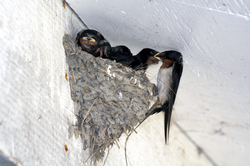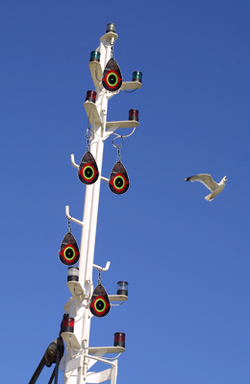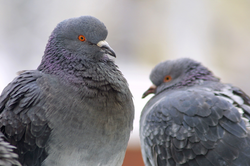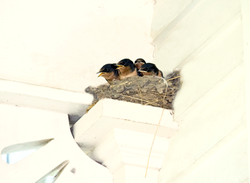
by Alex A. Kecskes
Swallows are sleek, slender birds typically found in North America. They are very territorial, returning to the same nesting site in the spring and summer. Once confined to cliffs, swallows have become a growing nuisance in suburban areas. Instead of attaching their nests to cliffs, many prefer man-made sites like the wood beams and stucco of modern houses. They often build their characteristic mud nests in the outer walls and eaves of homes. (One home was "decorated" with at least 32 swallow abodes constructed of hardened mud.) Left on your home long enough, swallow nests will leave an unsightly stain.
A colony of birds will also leave a trail of droppings down the sides of your home and the ground below. Property owners spend time and money cleaning up the mess and concern over the slip-and-fall hazards from swallow droppings. The bacteria, fungal agents and parasites found in swallow droppings and nests can carry hosts with serious diseases, including histoplasmosis, encephalitis, salmonella, meningitis, toxoplasmosis and more.
Worse yet, swallow mud nests are often infested with insects. The insects tend to move into your home to find new hosts. Even when swallows leave, their vacant nests simply attract new birds.
Homeowners should be rightly concerned about swallows nesting on their homes, but there are limitations to what one can do. You see, swallows and their nests are fully protected under the Migratory Bird Treaty Act of 1918, which makes it illegal to intentionally kill, injure or take any migratory bird. It is also illegal to intentionally damage or destroy the nest, eggs, or young of a swallow while it is being built or in use. The Act allows fines or prison sentences for every bird, egg or nest destroyed.
Fortunately, there are some swallow deterrents one can use that are both effective and humane.



 RSS Feed
RSS Feed